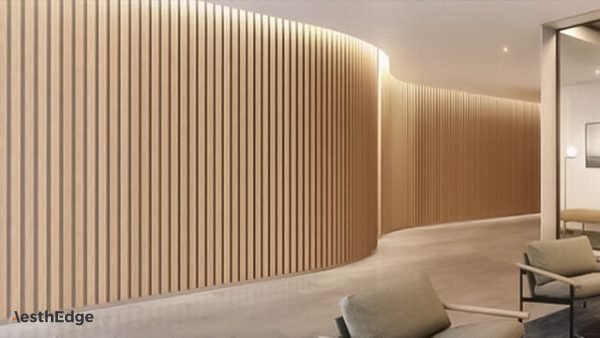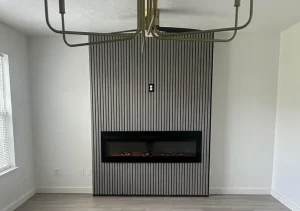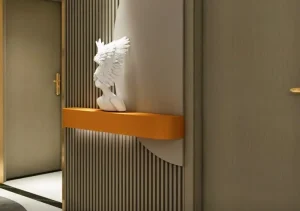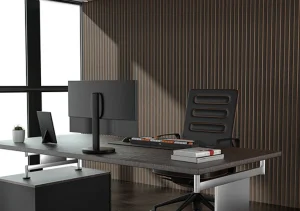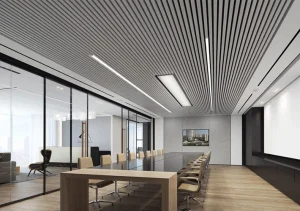Table of Contents
ToggleIntroduction
The construction and design industries are increasingly demanding innovative materials that combine strength, aesthetic appeal, and environmental sustainability. Two such materials, Bamboo Charcoal Wood Veneer PET Film and PVC Film, are commonly used in a variety of applications from interior design to product packaging. While both materials offer distinctive advantages, they also come with certain trade-offs. This article delves deep into a comprehensive comparison of the two, focusing on their composition, physical properties, environmental impact, durability, applications, and cost, offering a detailed understanding of each material’s suitability for various industries.
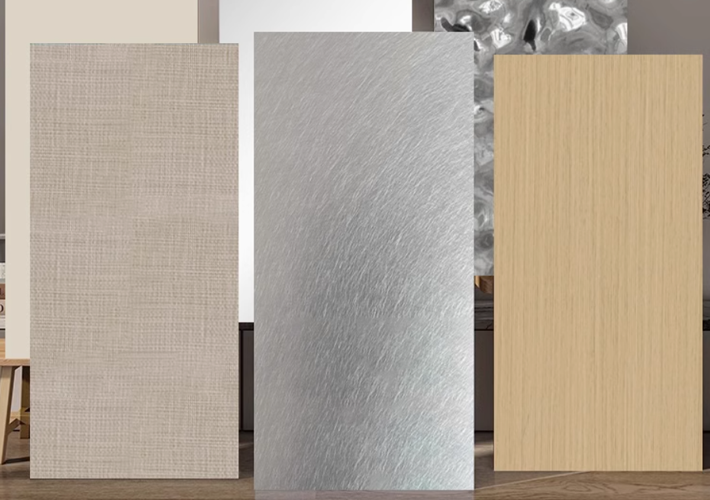
Material Composition
Bamboo Charcoal Wood Veneer PET Film: Bamboo Charcoal Wood Veneer PET film is a composite material that integrates two elements: Bamboo Charcoal and Polyethylene Terephthalate (PET). Bamboo charcoal is derived from the bamboo plant, known for its sustainable growth and carbon sequestration properties. The charcoal provides natural aesthetic appeal and environmental benefits, while the PET component is a widely used thermoplastic known for its durability and strength.
- Bamboo Charcoal: Bamboo charcoal is made by burning bamboo at high temperatures in an oxygen-limited environment. The result is a material that is both porous and lightweight, with unique benefits such as odor absorption, moisture resistance, and antibacterial properties.
- PET: PET, a member of the polyester family, is a strong and flexible plastic commonly used in packaging, textiles, and various other applications. It is lightweight, resistant to impact, and has excellent dimensional stability.
Combining these two materials results in a product that offers the strength and versatility of PET with the aesthetic and environmental benefits of bamboo charcoal, particularly in decorative and sustainable applications.
PVC Film: Polyvinyl chloride (PVC) film is one of the most widely used plastic films in the world. It is made from polymerized vinyl chloride monomers and can be formulated with various additives such as plasticizers, stabilizers, and fillers to modify its flexibility, transparency, and durability. PVC films can be either rigid or flexible, depending on the specific additives used.
- PVC Composition: PVC is a synthetic polymer that, when combined with different additives, can be made into rigid or flexible forms. In its flexible form, it is commonly used in films and sheeting, offering a wide range of applications across multiple industries.
- Additives: To improve the properties of PVC, various additives such as plasticizers (which make PVC flexible), stabilizers (to prevent degradation), and fillers (to enhance properties such as impact resistance) are mixed into the base resin.
PVC film’s formulation allows for a wide range of textures and finishes, making it adaptable for use in packaging, home décor, automotive, and medical applications.

Physical Properties
Bamboo Charcoal Wood Veneer PET Film: The physical properties of Bamboo Charcoal Wood Veneer PET film combine the strength and durability of PET with the natural appeal of bamboo charcoal.
- Strength: PET is renowned for its high tensile strength, making the film durable and resistant to tearing and stretching. It can withstand significant mechanical stress, making it ideal for applications where the material needs to resist wear and tear.
- Moisture Resistance: The inclusion of bamboo charcoal improves moisture resistance, which is crucial in environments with high humidity or exposure to water.
- Texture and Appearance: The natural bamboo charcoal layer gives the film a unique and elegant wood-like appearance. Its matte finish and realistic grain texture make it a popular choice in interior design, particularly in high-end residential and commercial applications.
- UV Resistance: PET is resistant to UV radiation, meaning the material will not degrade easily when exposed to sunlight. This property extends the longevity of the material, making it suitable for outdoor applications or areas with high sunlight exposure.
PVC Film: PVC films are known for their flexibility, strength, and range of finishes, but they differ significantly from Bamboo Charcoal Wood Veneer PET film in terms of aesthetic appeal and performance in certain environmental conditions.
- Strength: PVC films can be formulated to be strong and durable, though they are generally not as tough as PET. The strength of PVC films can vary depending on the type and amount of plasticizers added during production.
- Moisture Resistance: PVC is naturally resistant to water and moisture, which is why it is frequently used in applications such as flooring, wall coverings, and packaging that come into contact with water or humidity.
- Texture and Appearance: PVC films can be produced with a wide variety of finishes, including glossy, matte, and embossed textures. However, it lacks the organic and natural look provided by bamboo charcoal, making it less desirable for applications requiring an upscale or nature-inspired aesthetic.
- UV Resistance: PVC is prone to degradation under prolonged UV exposure, which can lead to fading, brittleness, and loss of mechanical strength. Therefore, PVC films are often used in indoor applications or those that don’t receive significant UV exposure.
Environmental Impact
Bamboo Charcoal Wood Veneer PET Film: Bamboo charcoal offers significant environmental advantages, as bamboo is one of the most rapidly renewable resources in the world. The use of bamboo charcoal reduces the need for wood products, thereby decreasing deforestation.
- Sustainability: Bamboo is fast-growing and can be harvested every 3-5 years, making it a renewable resource. The incorporation of bamboo charcoal into PET film increases the overall sustainability of the material. Additionally, PET is widely recyclable, which further contributes to the material’s eco-friendly profile.
- Biodegradability: While PET is not biodegradable, it is highly recyclable, and efforts are underway to make PET recycling even more efficient. Bamboo charcoal, being organic, will break down naturally over time, leaving a smaller environmental footprint.
- Carbon Footprint: Bamboo has a lower carbon footprint compared to hardwoods, as it requires less energy and water to grow and harvest. The combination of bamboo charcoal and PET can therefore be considered a more eco-conscious alternative to materials like PVC, which have a higher carbon footprint due to their reliance on fossil fuels.
PVC Film: PVC film has several environmental drawbacks. The production of PVC involves the use of fossil fuels, and it can release harmful chlorine by-products into the environment. Furthermore, PVC is not biodegradable, and its disposal can cause environmental concerns, particularly in landfills where it can persist for hundreds of years.
- Sustainability: The production of PVC is energy-intensive, requiring large amounts of fossil fuels. Additionally, the extraction of petroleum and the use of chlorine-based chemicals in production can have a negative impact on the environment.
- Biodegradability: PVC is not biodegradable, which means that when it is disposed of in landfills, it can remain for a long time. While it is recyclable, PVC recycling rates are lower than those of PET.
- Carbon Footprint: The carbon footprint of PVC is higher than that of Bamboo Charcoal Wood Veneer PET film due to the energy required in the production process and the use of petrochemicals.
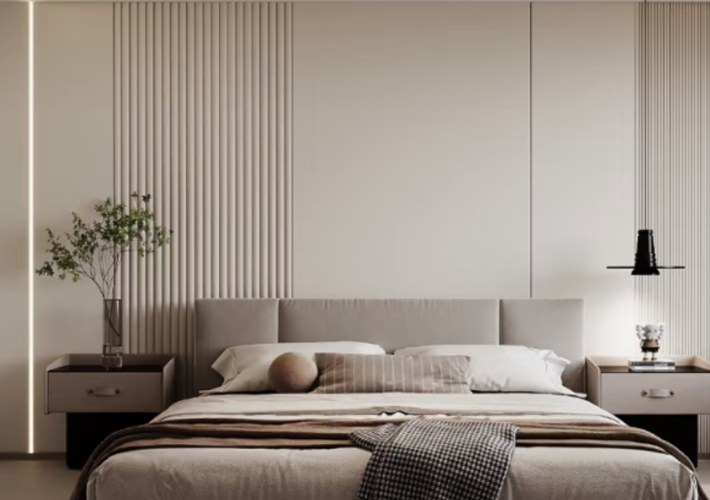
Applications
Bamboo Charcoal Wood Veneer PET Film: Bamboo Charcoal Wood Veneer PET film’s combination of durability and aesthetic appeal makes it well-suited for a variety of applications:
- Interior Design: The natural wood appearance makes it an excellent choice for wall panels, ceilings, furniture veneers, and cabinetry. Its aesthetic appeal makes it ideal for luxury residential or commercial projects.
- Automotive Industry: Bamboo Charcoal Wood Veneer PET film is increasingly being used in automotive interiors, particularly for dashboard trims, door panels, and upholstery.
- Packaging: The strength and moisture resistance of Bamboo Charcoal Wood Veneer PET film make it suitable for high-end packaging solutions, including luxury goods, cosmetics, and electronics.
- Furniture and Flooring: The natural texture and look of bamboo charcoal combined with the durability of PET makes it suitable for furniture veneers and flooring finishes.
PVC Film: PVC film’s versatility allows it to be used across a wide range of applications, particularly in areas that require moisture resistance and durability.
- Packaging: PVC is widely used for shrink wrapping, blister packs, and flexible packaging due to its strength and ease of processing. It is often chosen for its transparency and ability to form tightly around products.
- Decorative Applications: PVC films are used in wallpapers, flooring, and surface coatings. The wide variety of available finishes, including gloss, matte, and textured, makes PVC films adaptable to many different design needs.
- Medical and Industrial: PVC is used in medical applications such as IV bags and tubing, as well as in industrial settings where protective sheeting and surface coverings are needed.
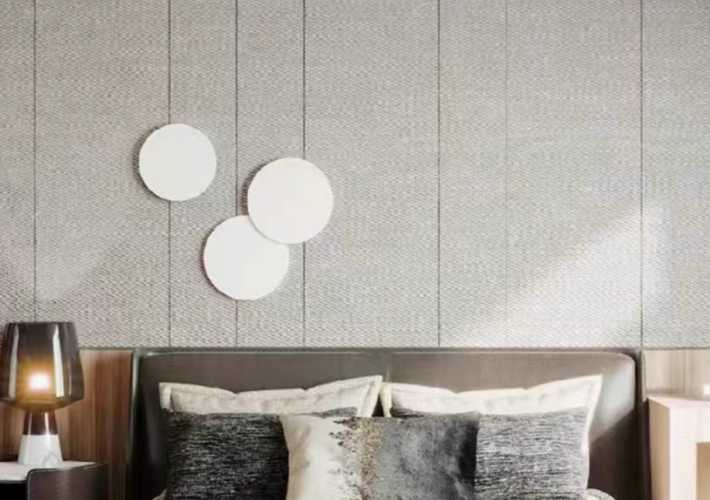
Cost Analysis
Bamboo Charcoal Wood Veneer PET Film: The production of Bamboo Charcoal Wood Veneer PET film involves higher costs due to the incorporation of bamboo charcoal and the advanced manufacturing techniques required to fuse the charcoal with PET. As a result, the material tends to be more expensive than standard PVC films. However, the higher initial cost is often justified by its superior durability, natural appearance, and environmental benefits. Additionally, the long lifespan of the material means that it can offer greater value in the long term.
PVC Film: PVC film is less expensive to manufacture and purchase, making it an attractive option for applications with cost constraints. Its production process is simpler and more widely scaled, which reduces costs. However, the lower price point may come at the expense of certain environmental and aesthetic qualities.
Durability and Maintenance
Bamboo Charcoal Wood Veneer PET Film:
- Durability: Bamboo Charcoal Wood Veneer PET film offers excellent durability, with resistance to wear and tear, UV light, and moisture. It is highly resistant to damage from abrasions and remains functional even under prolonged exposure to harsh conditions.
- Maintenance: This material requires minimal maintenance. Regular cleaning with a soft cloth and mild detergent is usually sufficient to maintain its appearance and performance. Its natural properties also help resist staining and discoloration over time.
PVC Film:
- Durability: PVC film is also durable but may not perform as well as PET in terms of UV resistance. Over time, it can become brittle and discolored, especially when exposed to sunlight.
- Maintenance: PVC films are relatively easy to clean, but they may require more frequent maintenance to prevent fading or damage from UV exposure. Regular dusting and cleaning with non-abrasive materials can help maintain its appearance.
Comparison in Manufacturing and Performance
Bamboo Charcoal Wood Veneer PET Film: The production process is more complex and costly, as it involves both bamboo charcoal processing and PET lamination. However, it delivers high-end performance, especially in luxury and eco-friendly markets.
PVC Film: PVC film is easier and cheaper to produce, but its performance and aesthetic appeal may fall short compared to Bamboo Charcoal Wood Veneer PET film. It is more suitable for budget-conscious applications where the need for sustainability and natural aesthetics is not as high.
Conclusion
In conclusion, Bamboo Charcoal Wood Veneer PET Film offers an eco-friendly, durable, and aesthetically appealing alternative to PVC film. Its superior strength, natural appearance, and sustainability make it ideal for luxury applications such as high-end interior design, automotive interiors, and packaging. However, the higher production cost may limit its widespread use for cost-sensitive applications.
On the other hand, PVC Film remains a versatile, cost-effective material that excels in applications where moisture resistance, flexibility, and ease of production are crucial. While it lacks the environmental benefits and natural look of Bamboo Charcoal Wood Veneer PET film, it continues to dominate the packaging and decorative sectors due to its lower cost and adaptability.
The choice between these two materials depends on specific application needs, budget constraints, and environmental considerations, with each offering distinct benefits depending on the requirements of the project.

